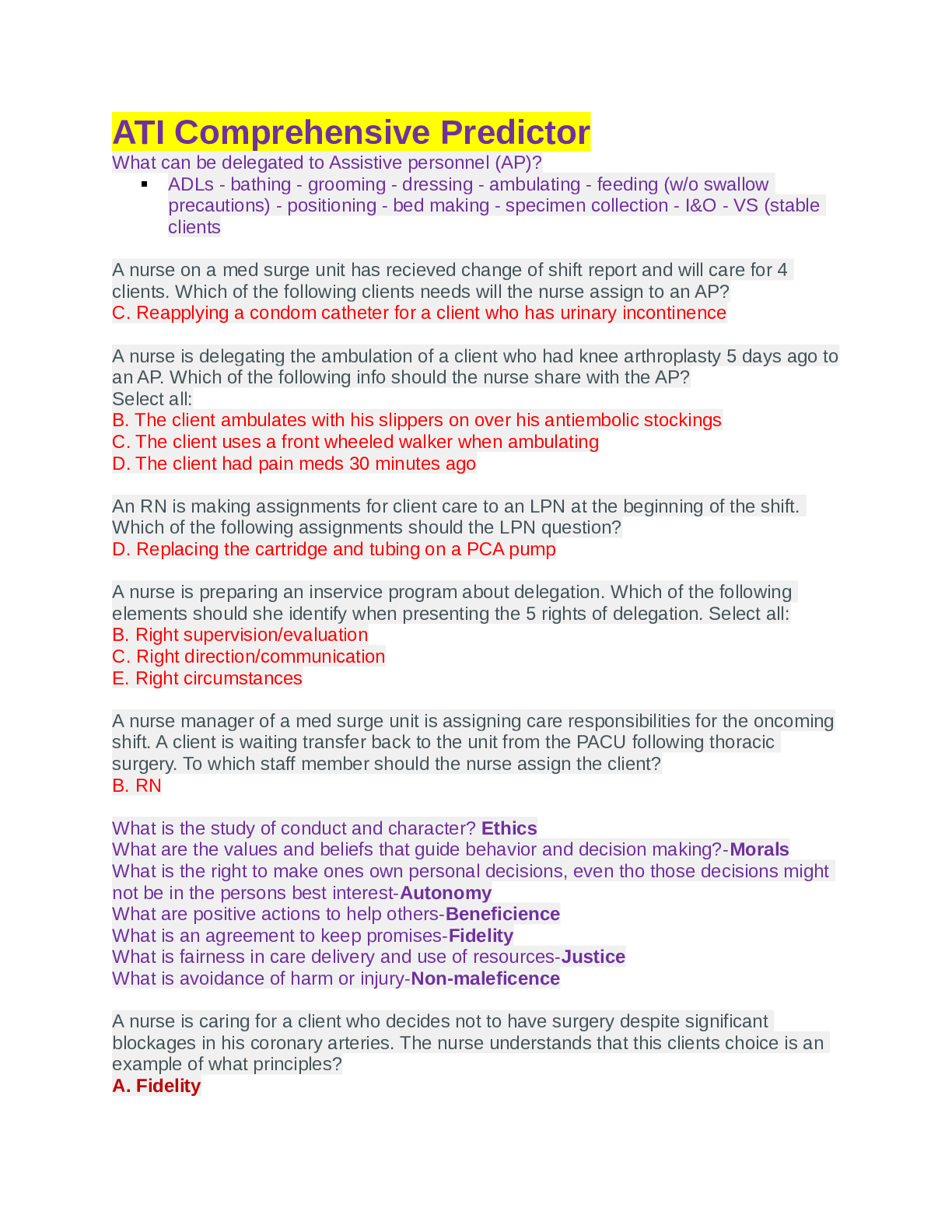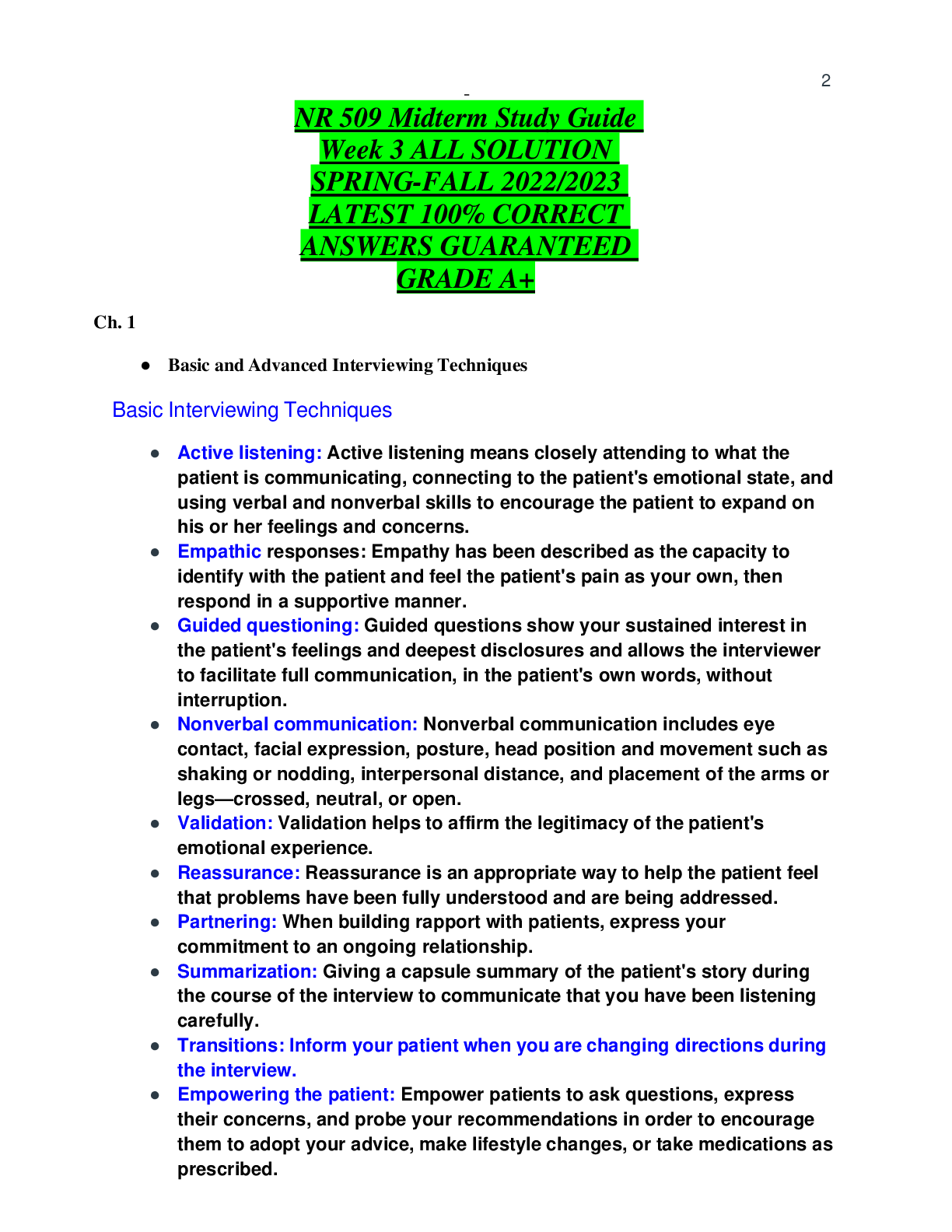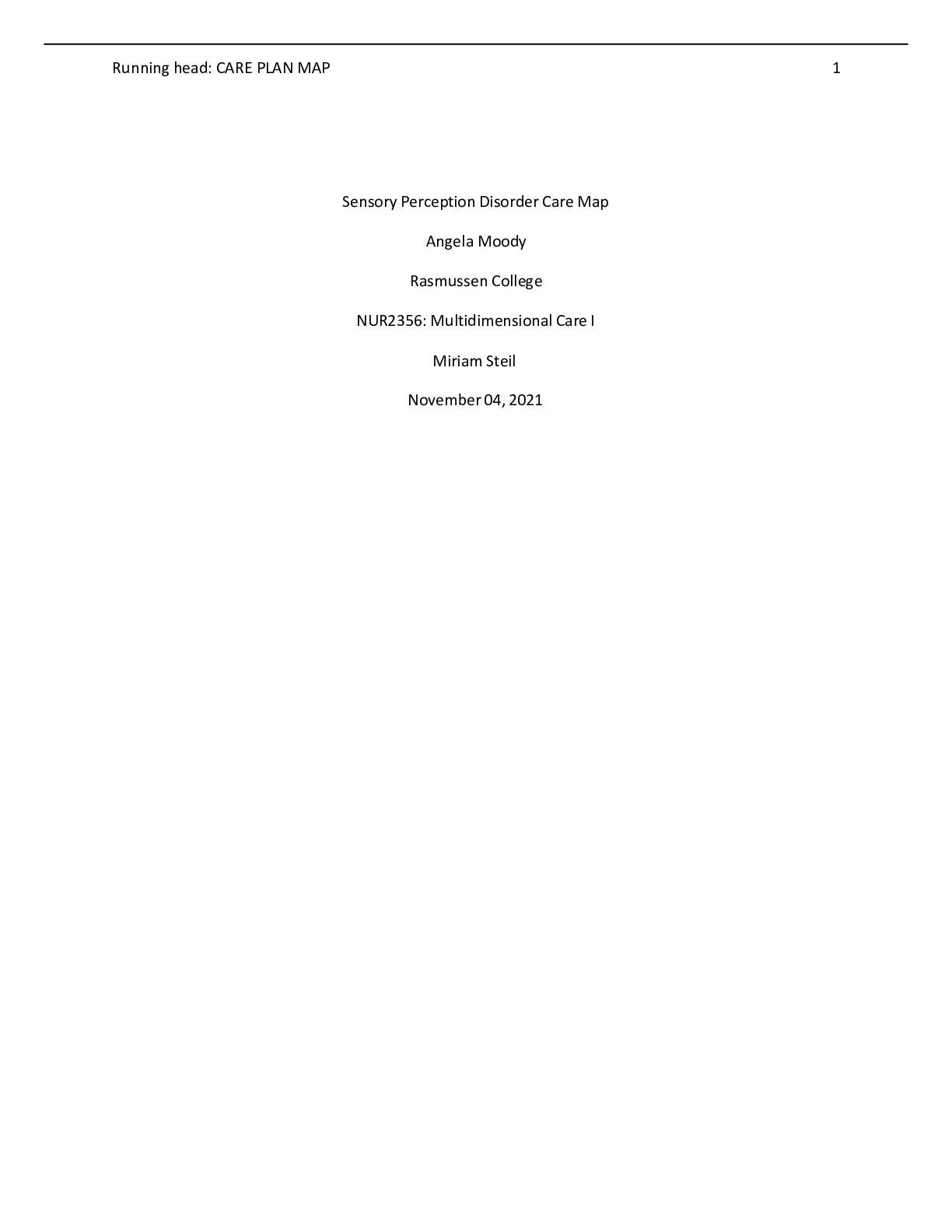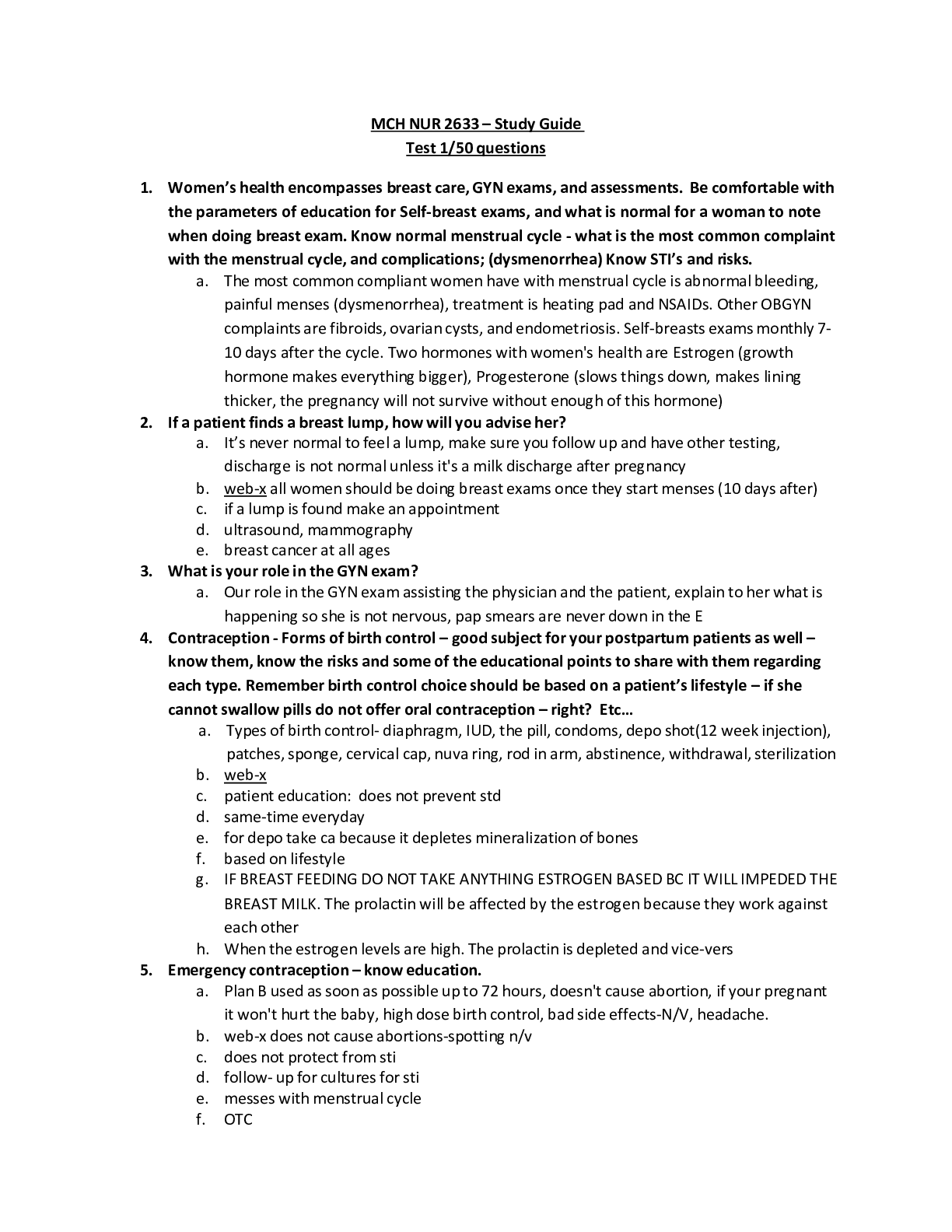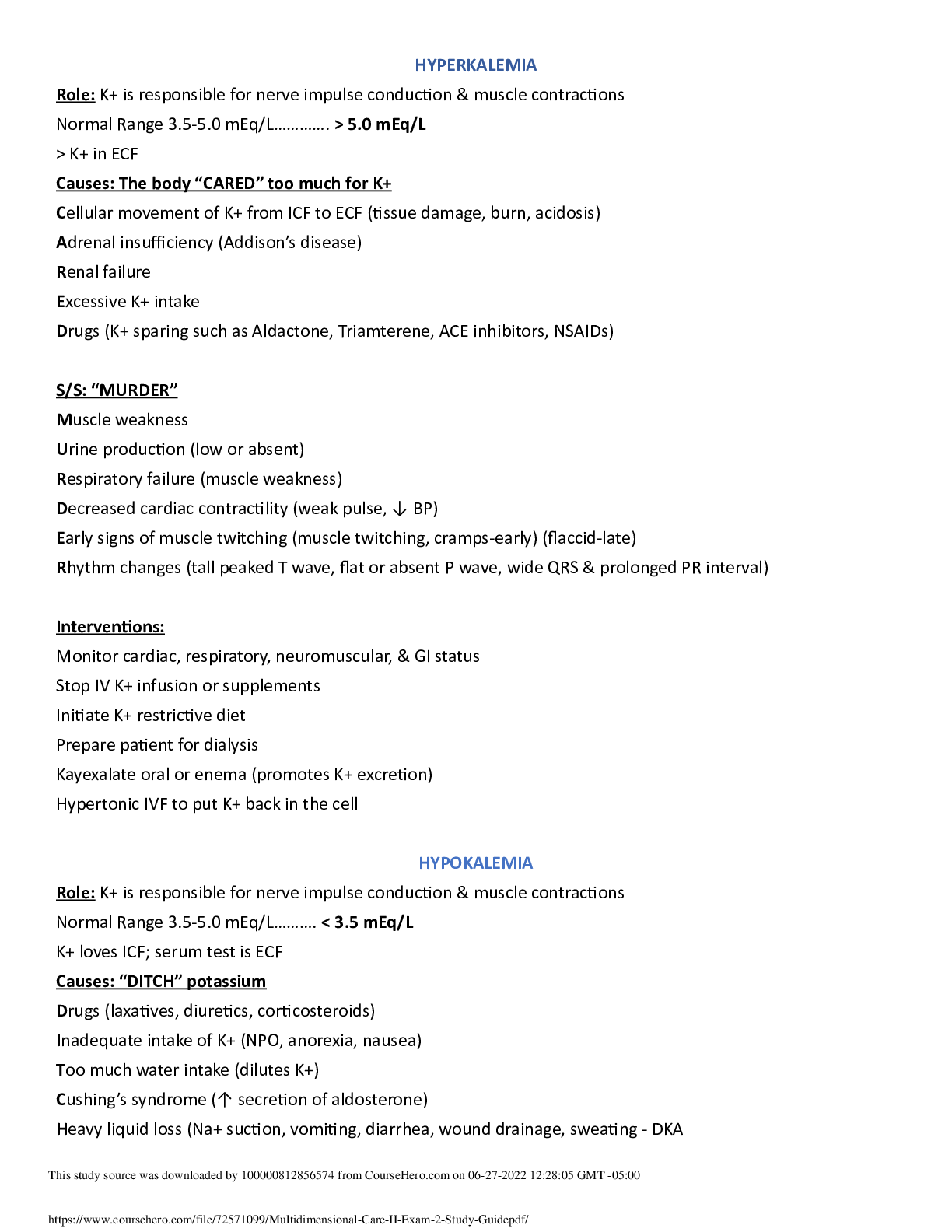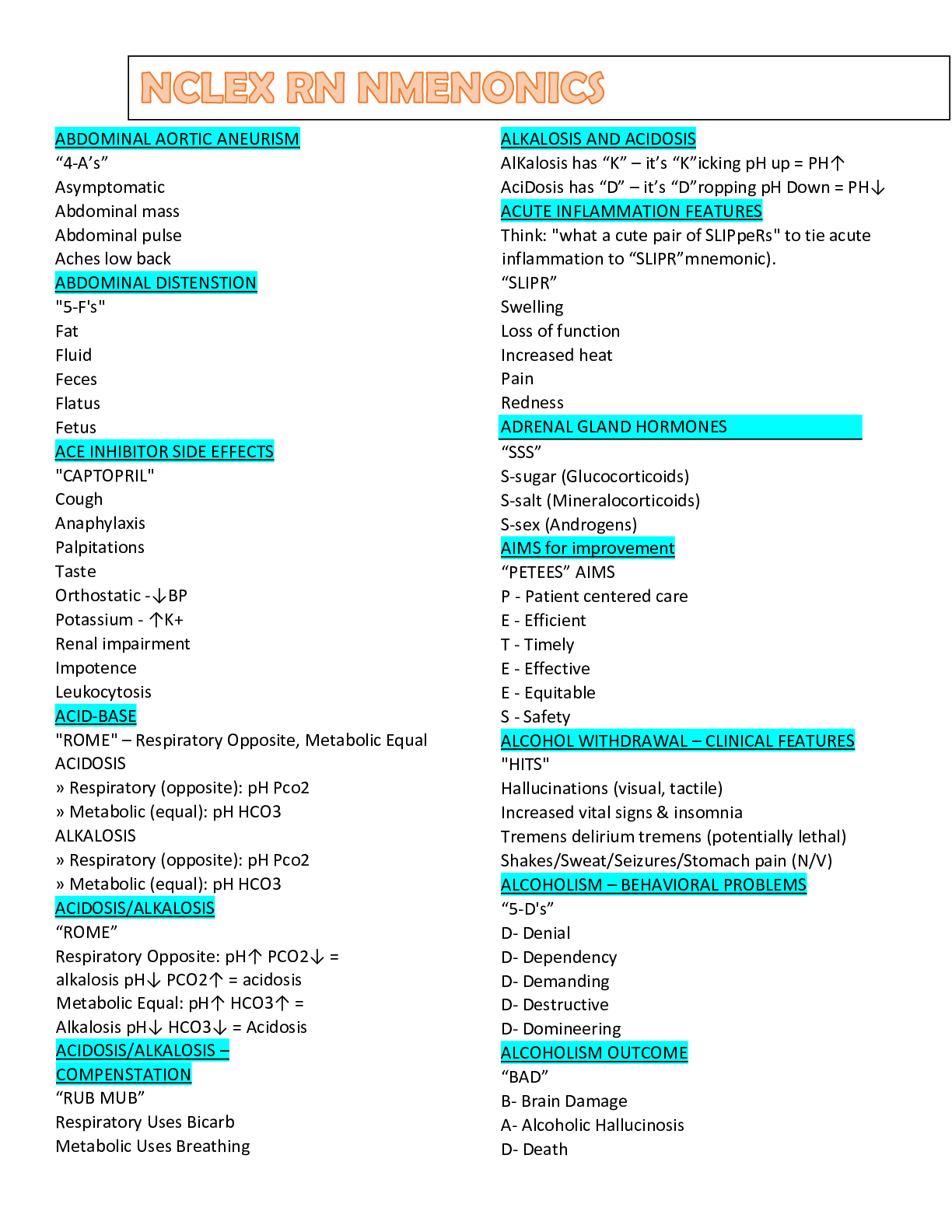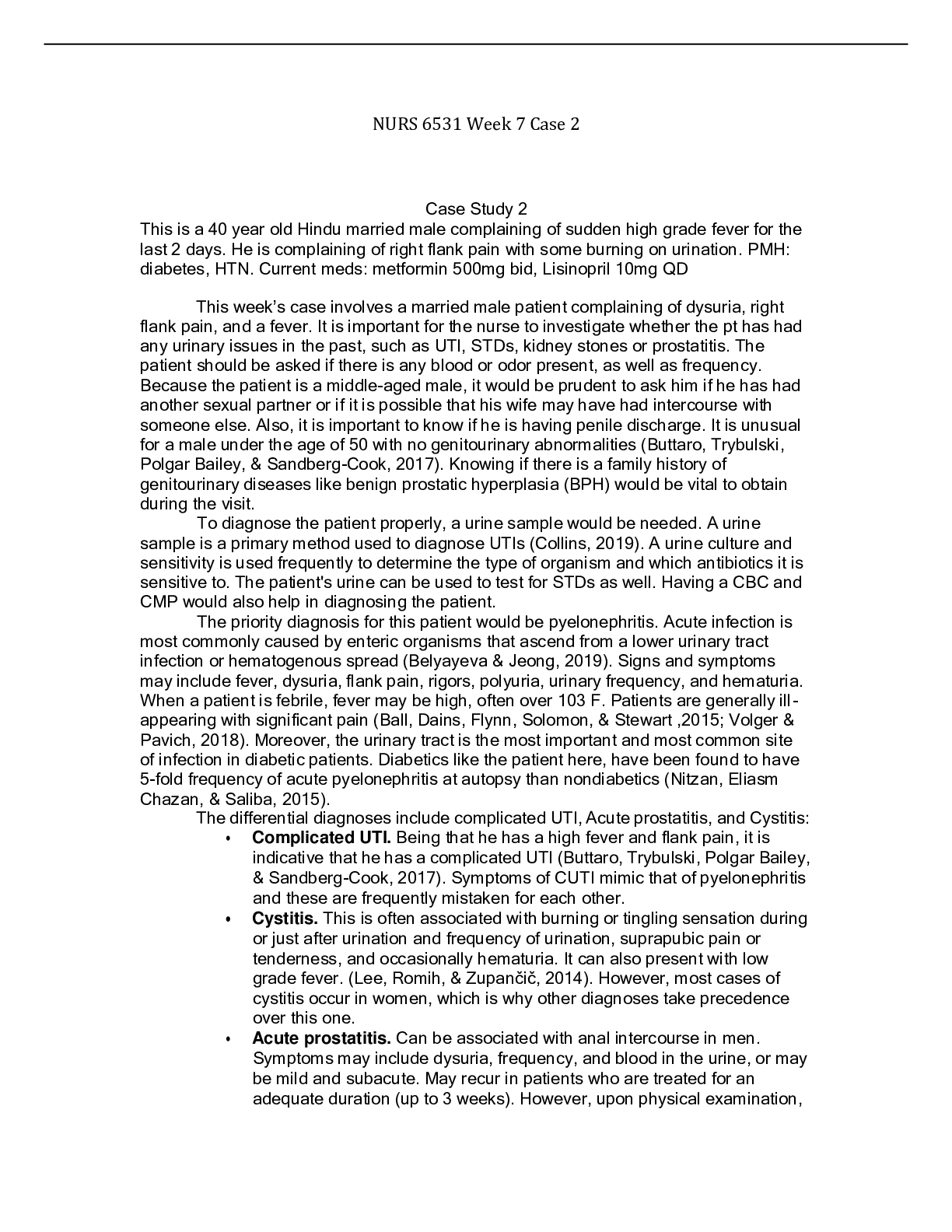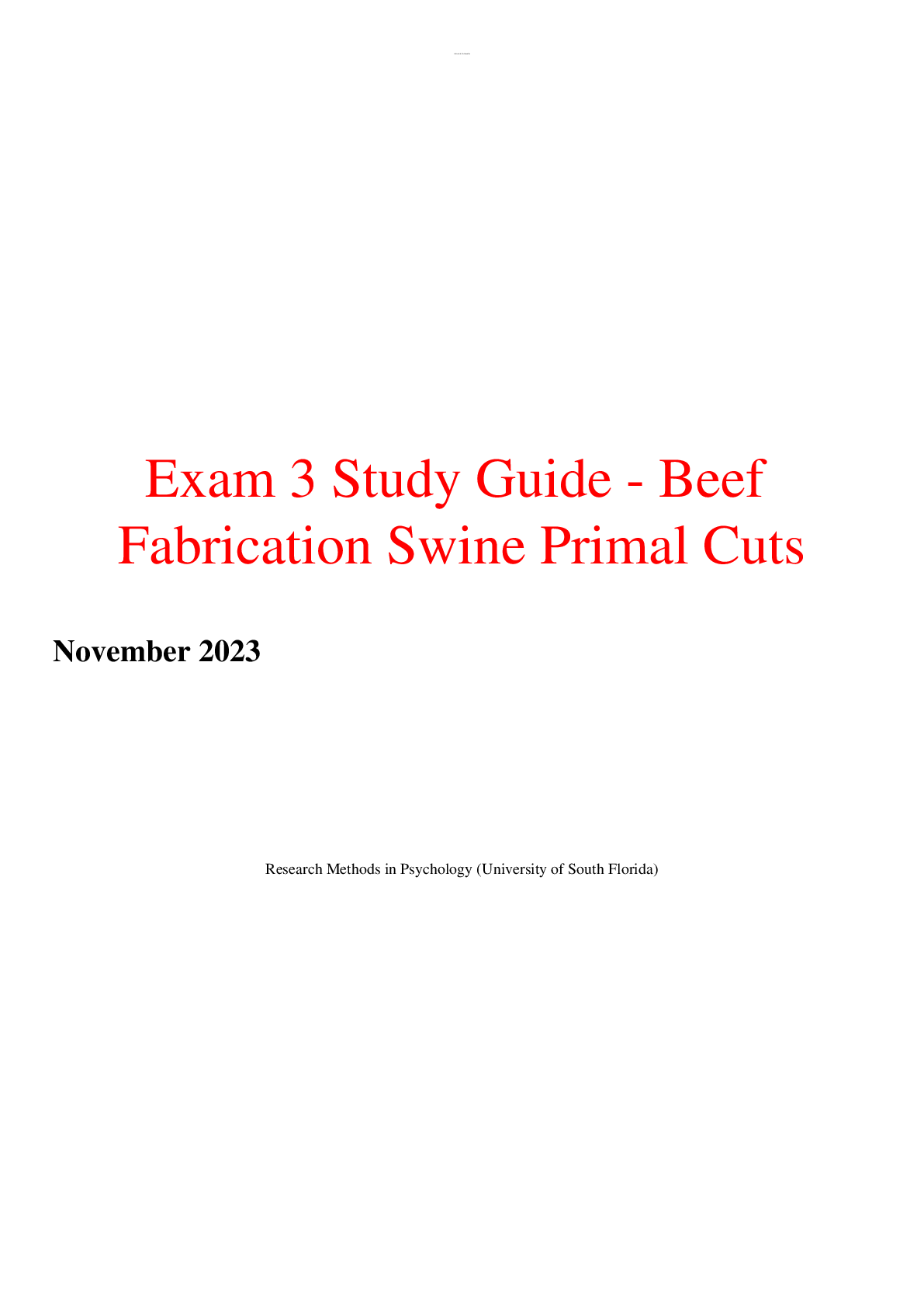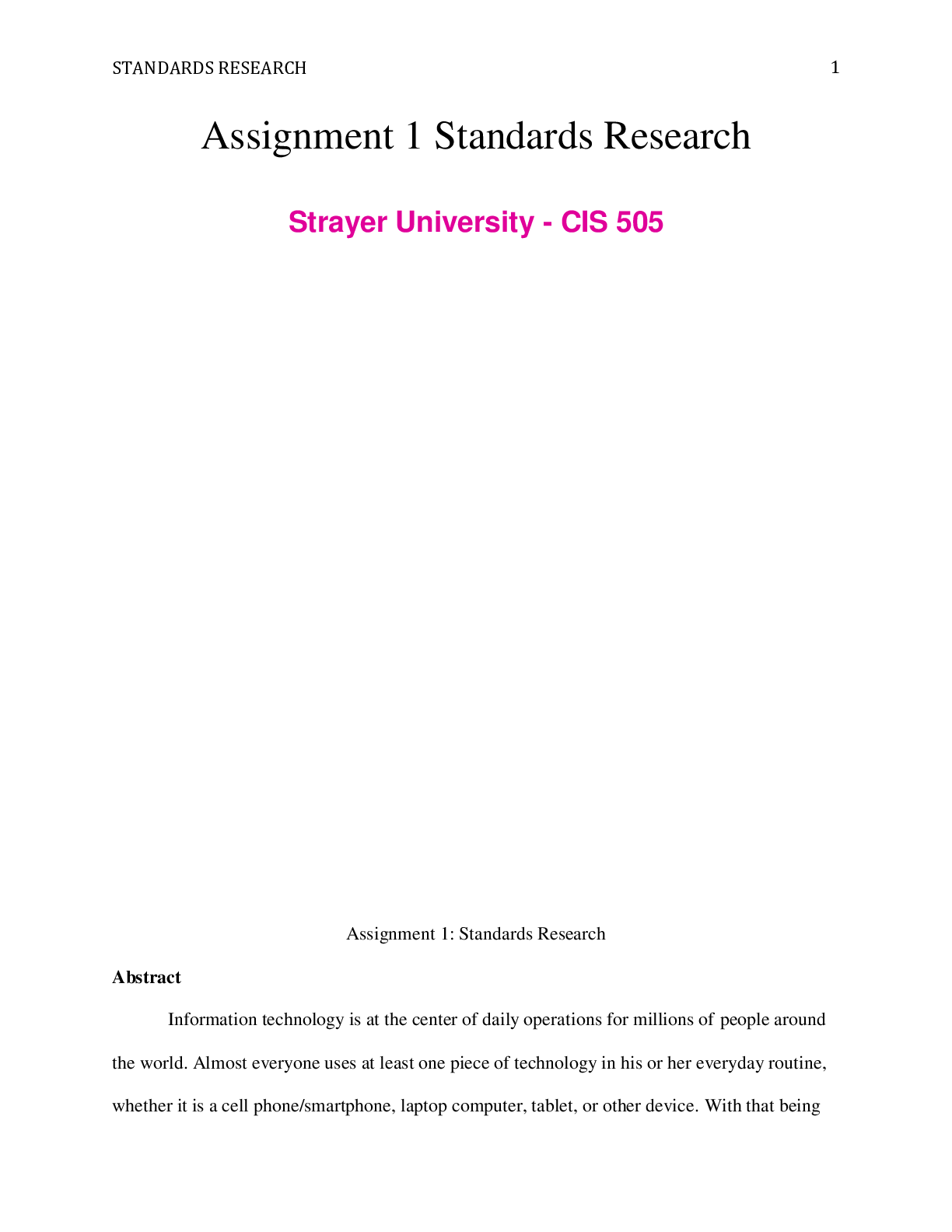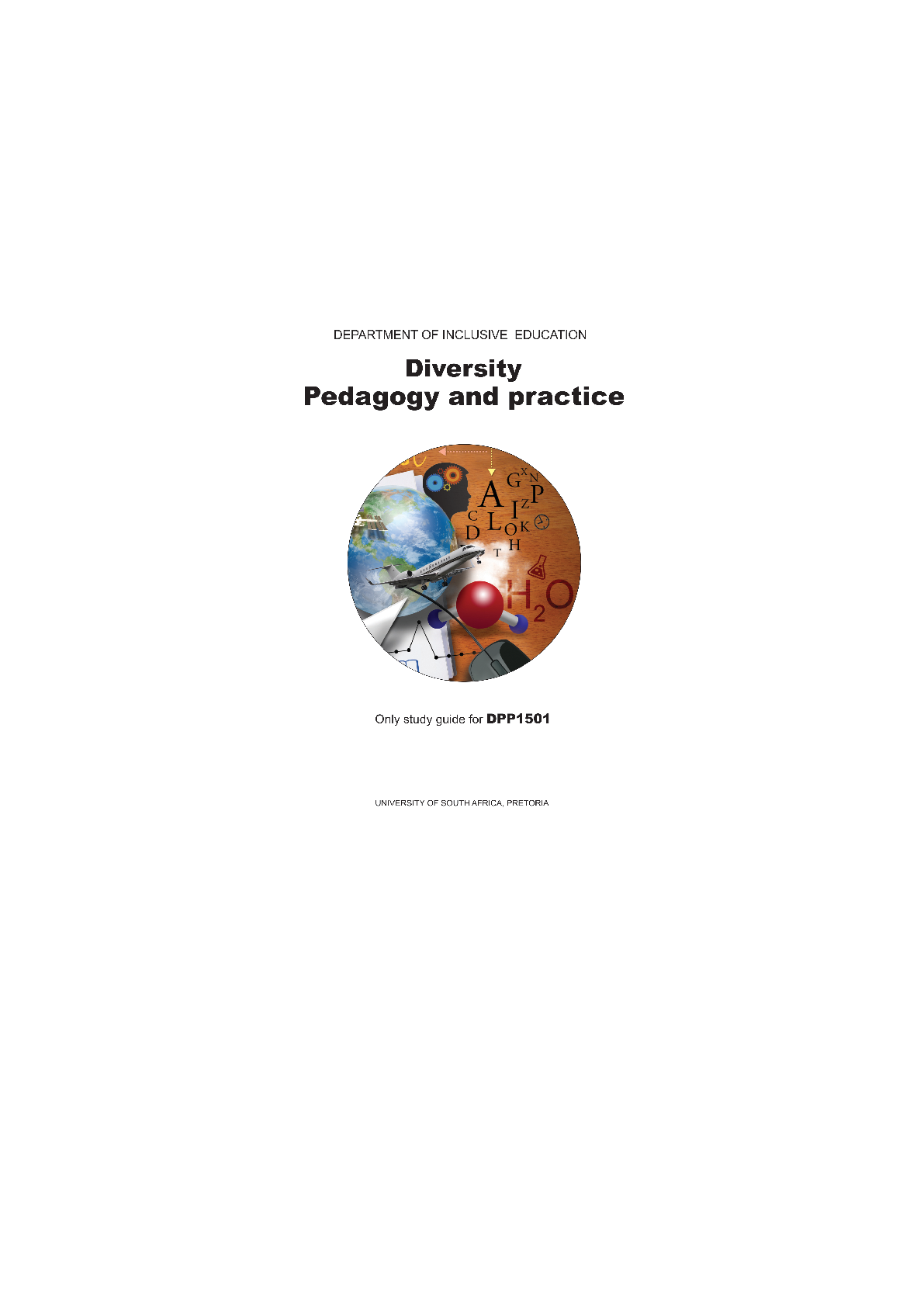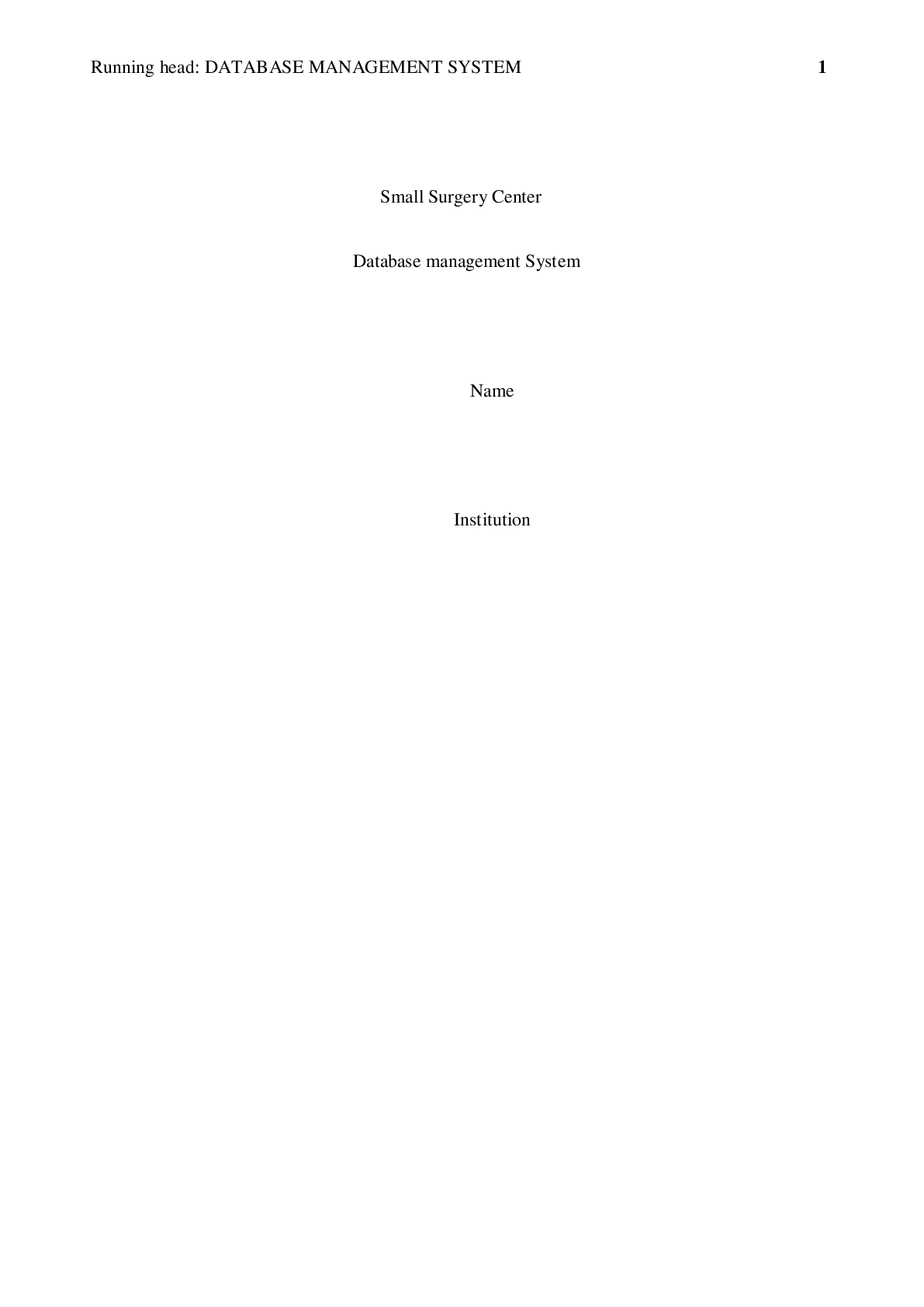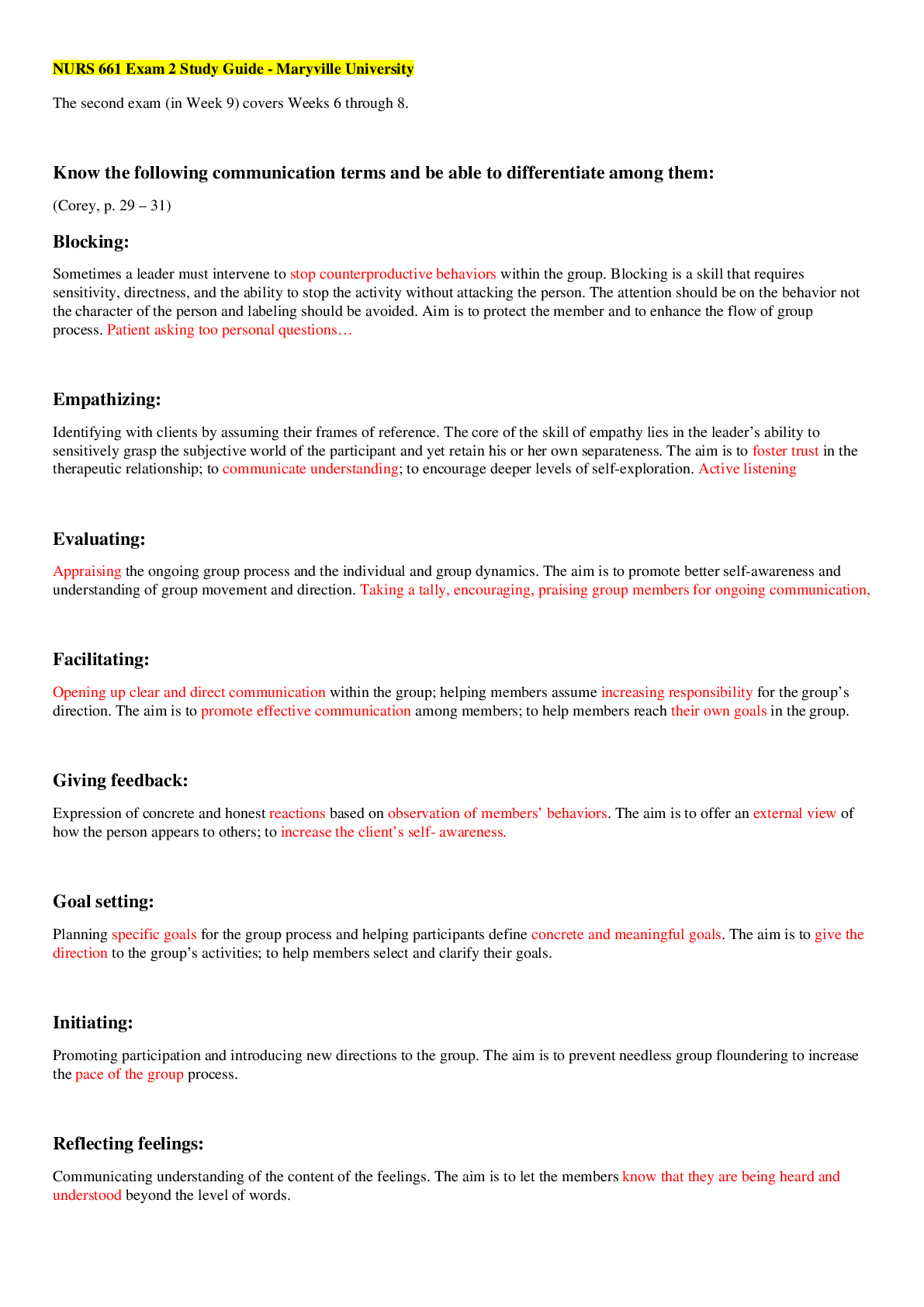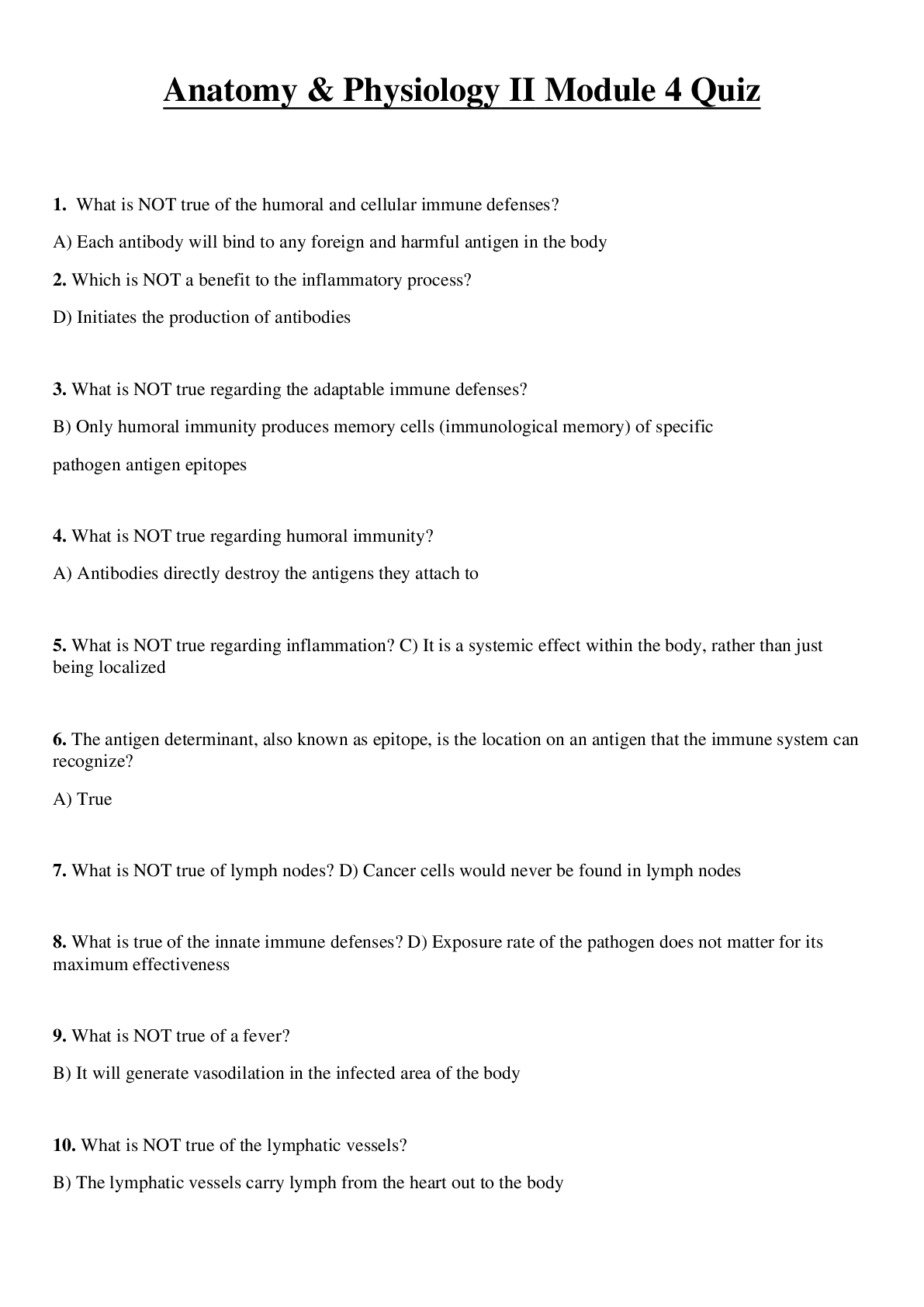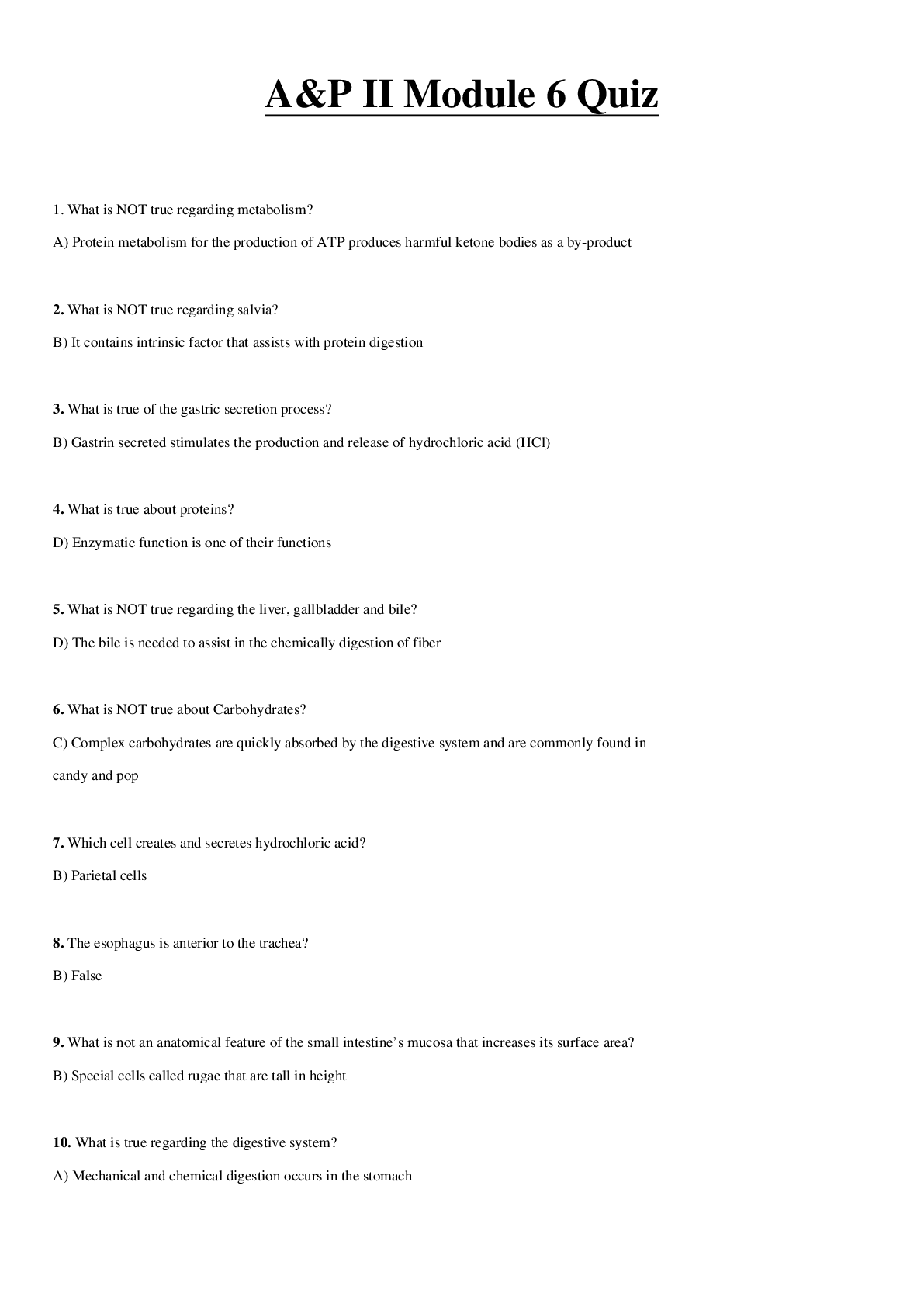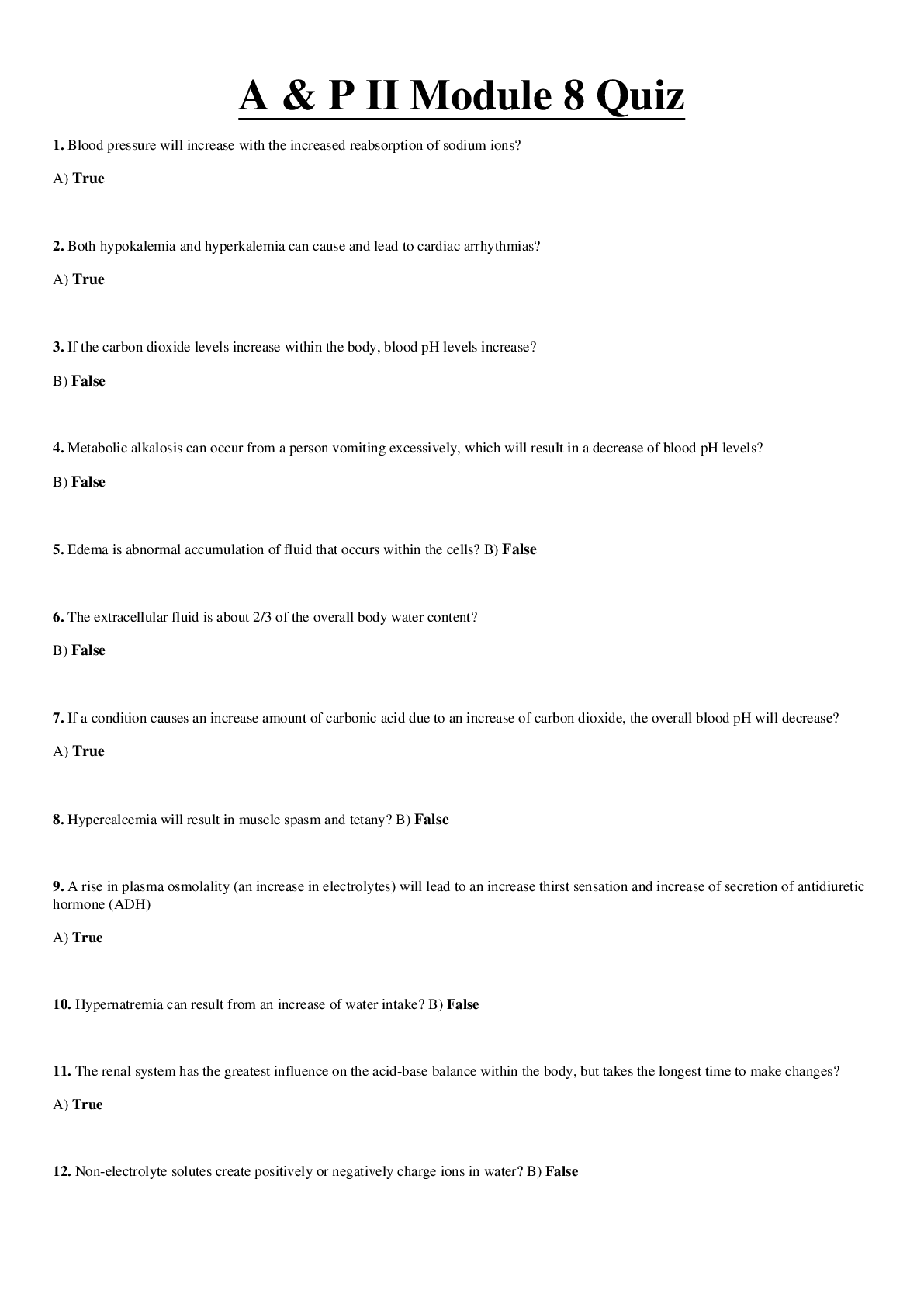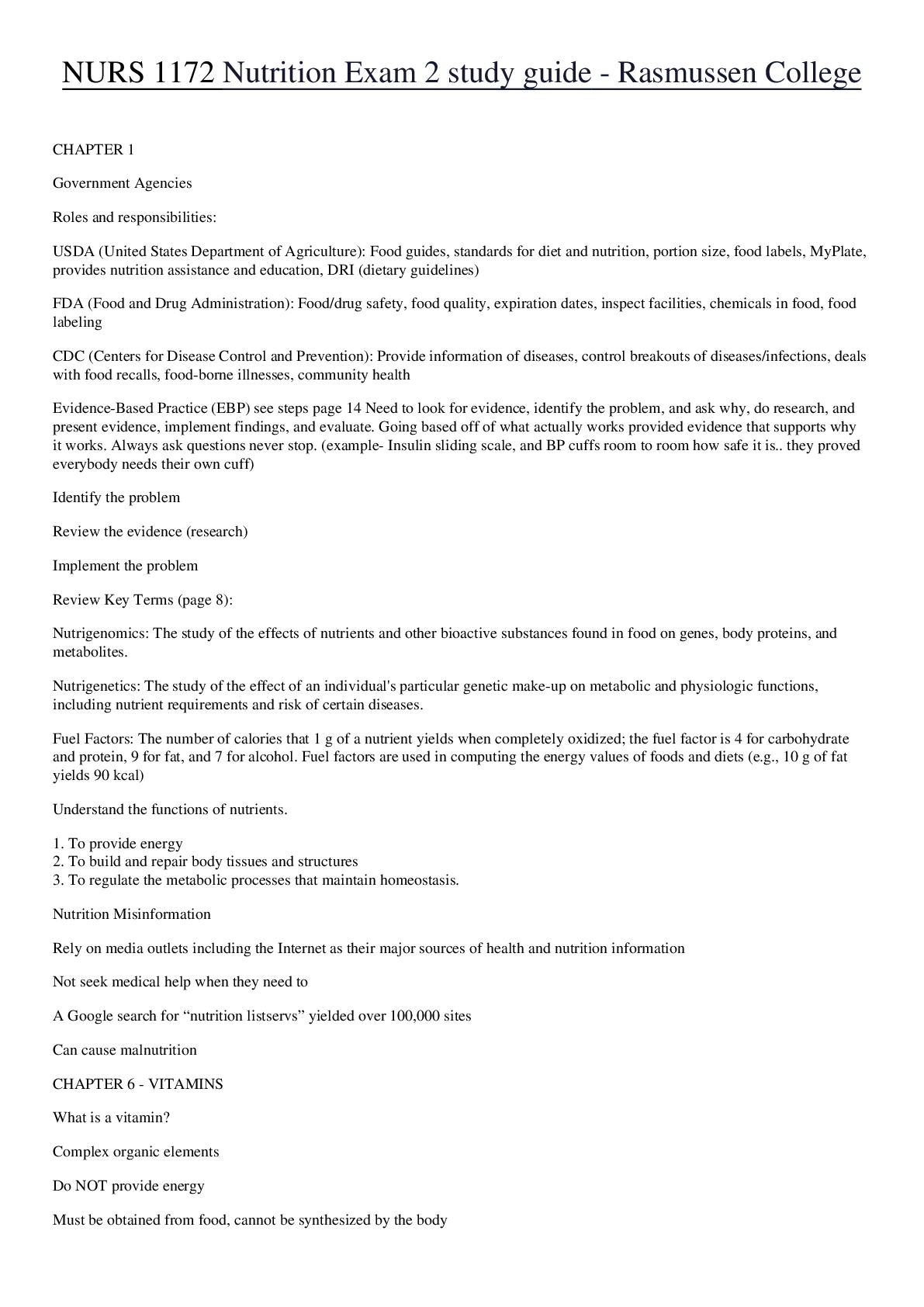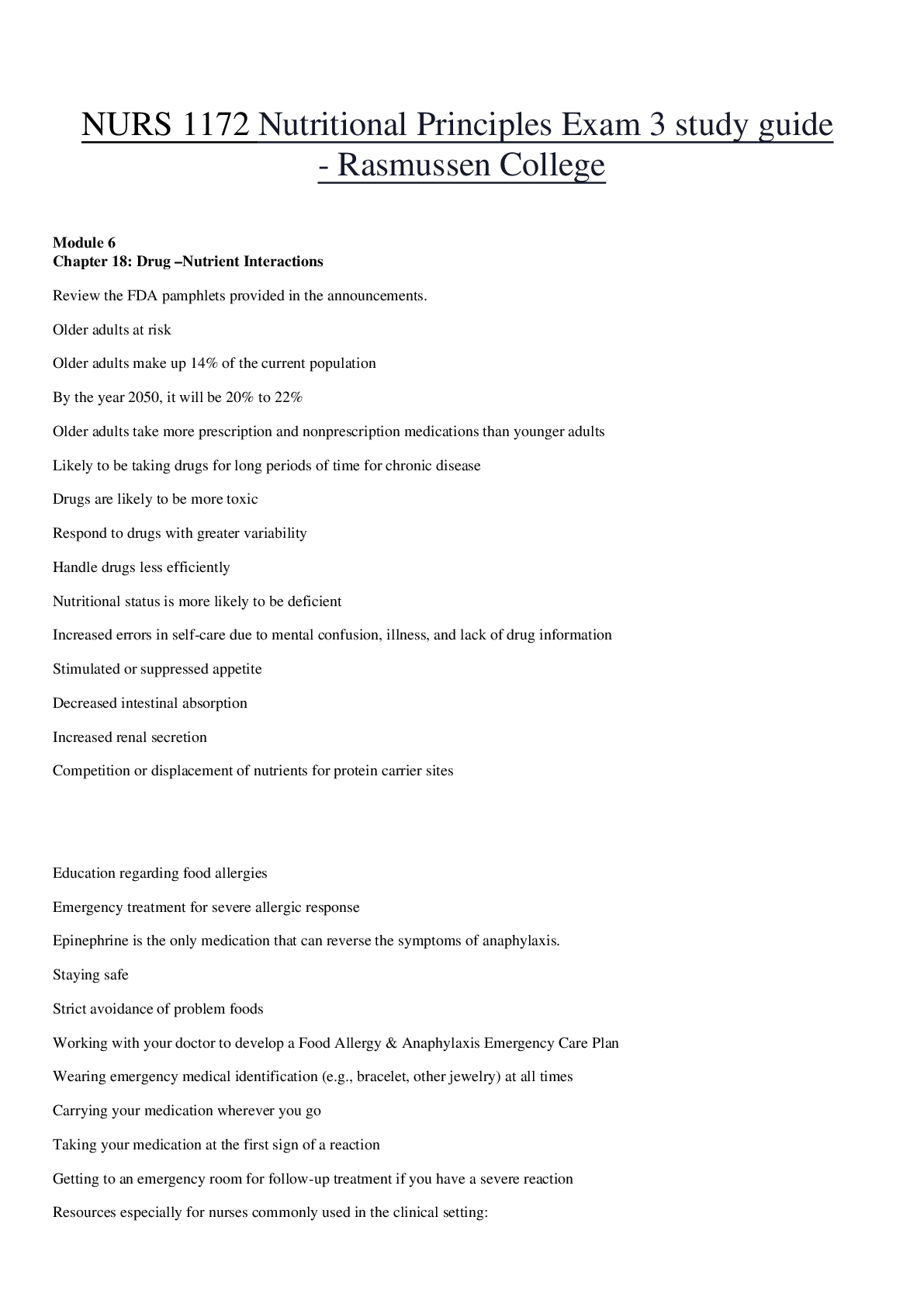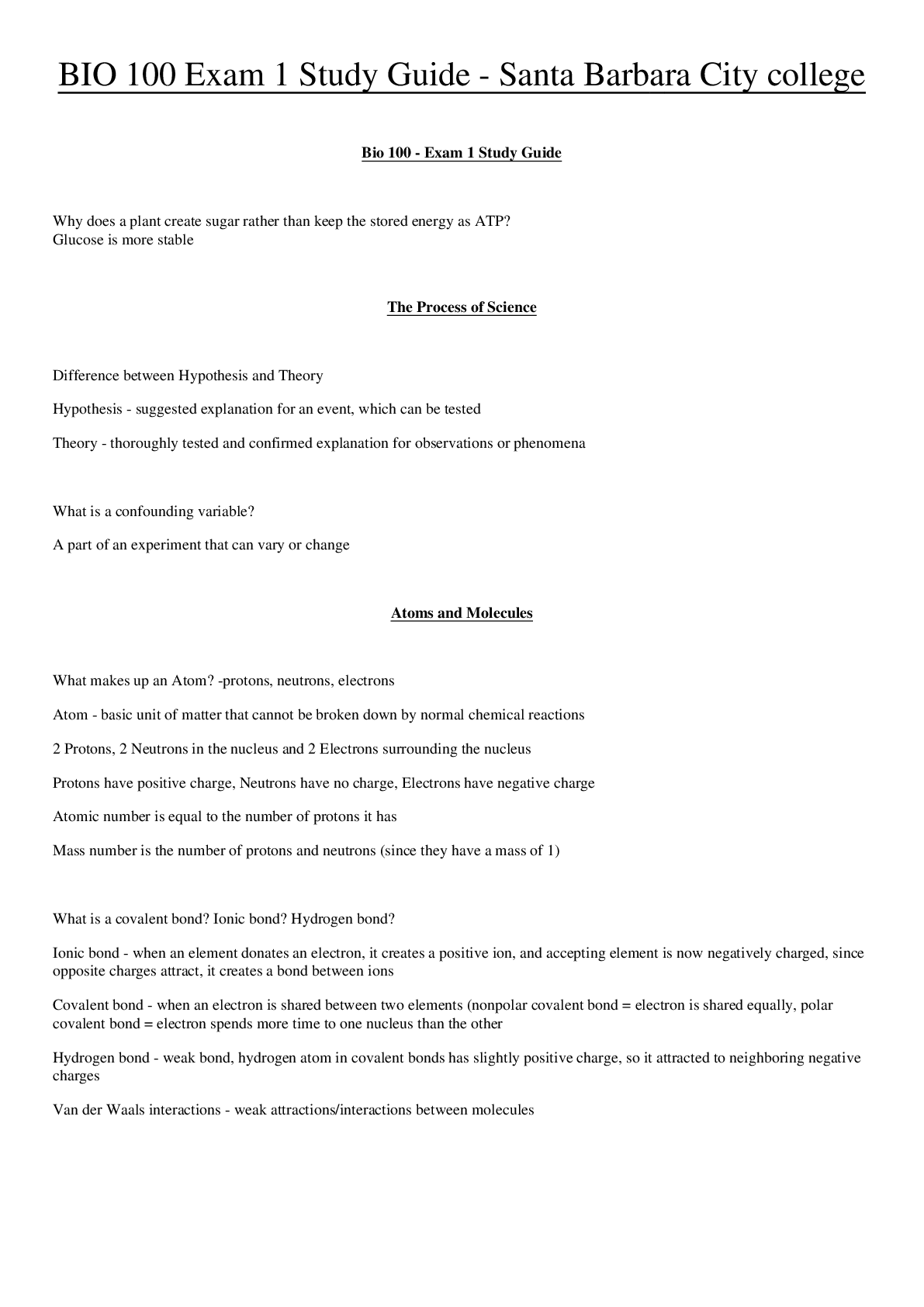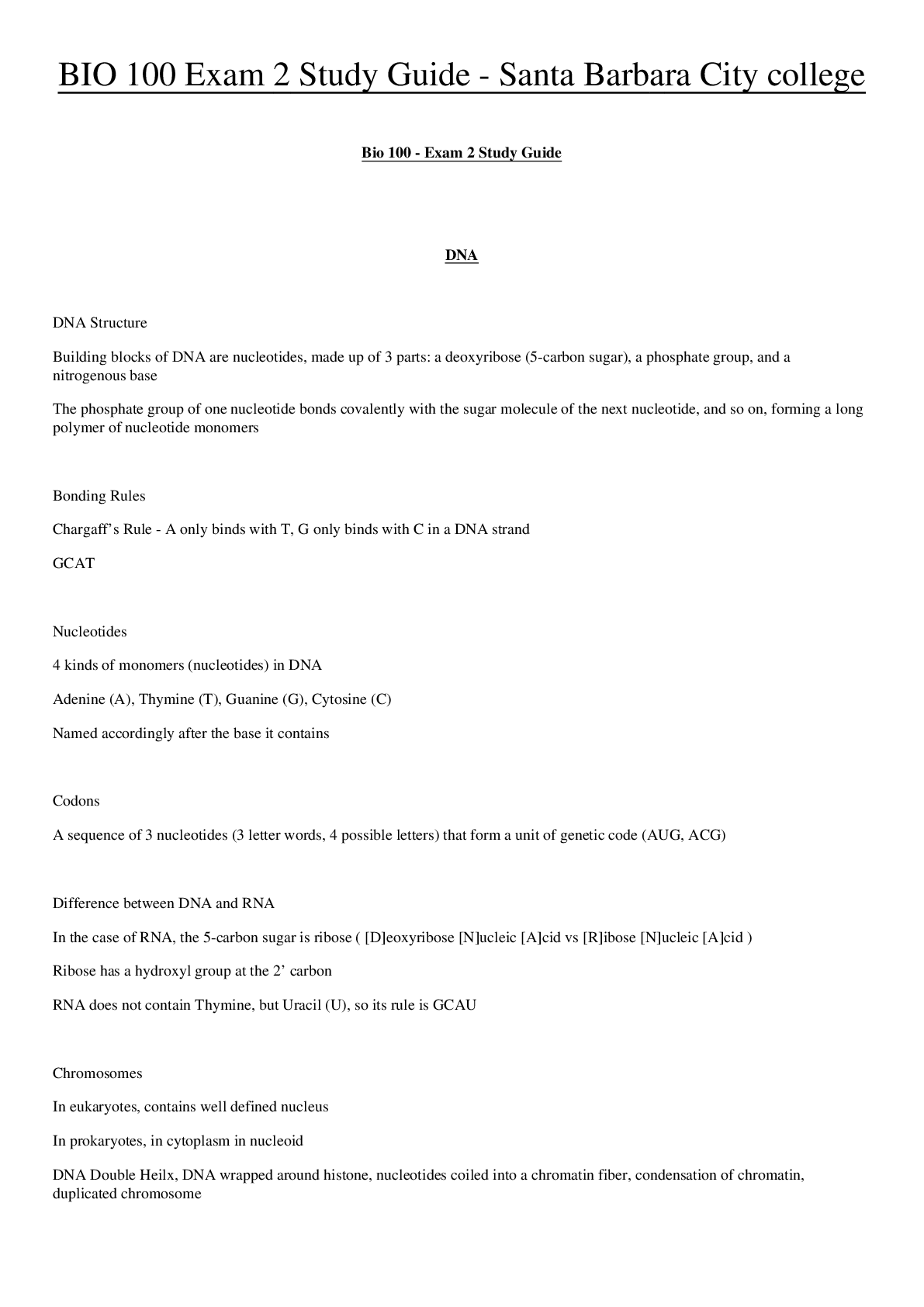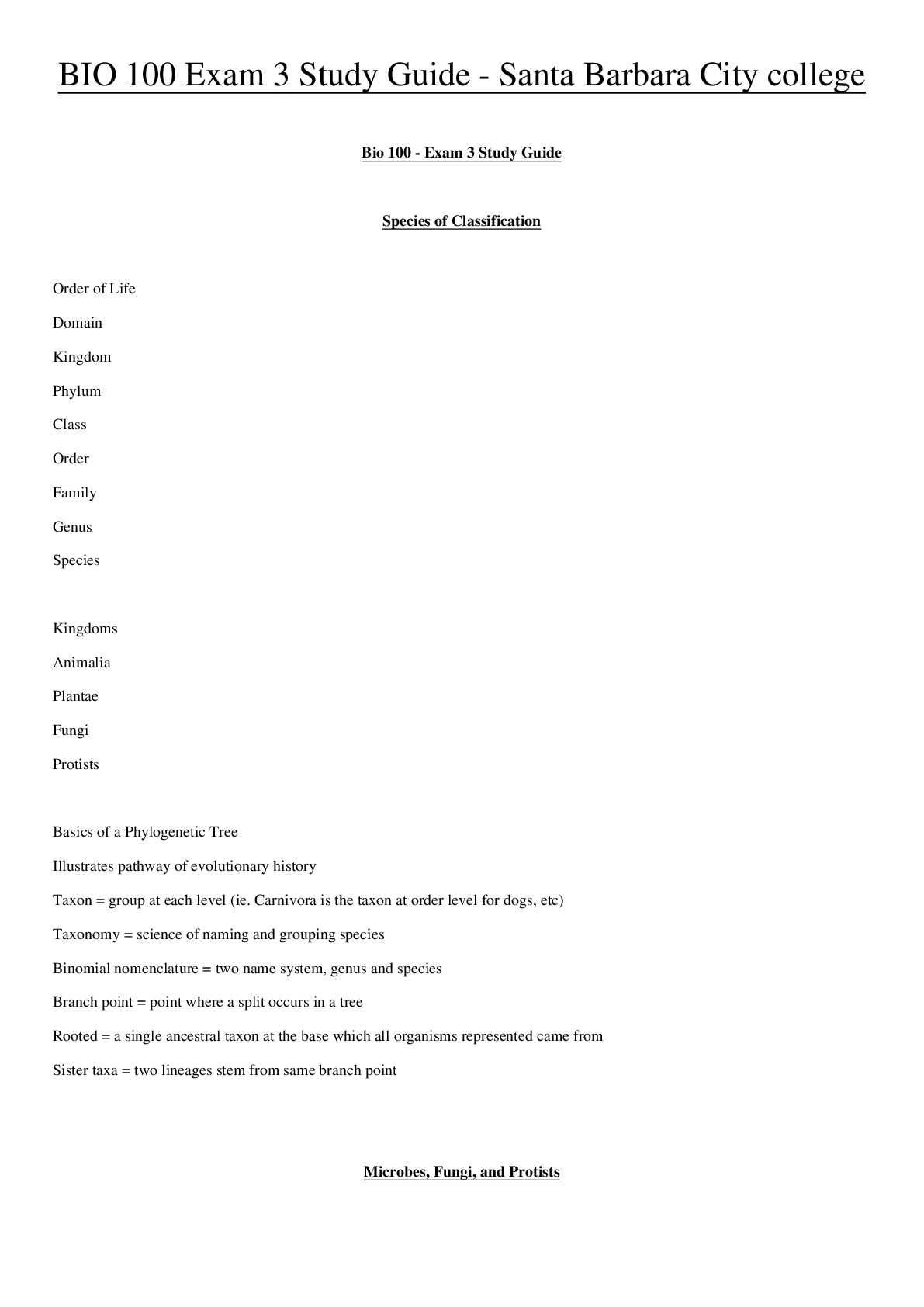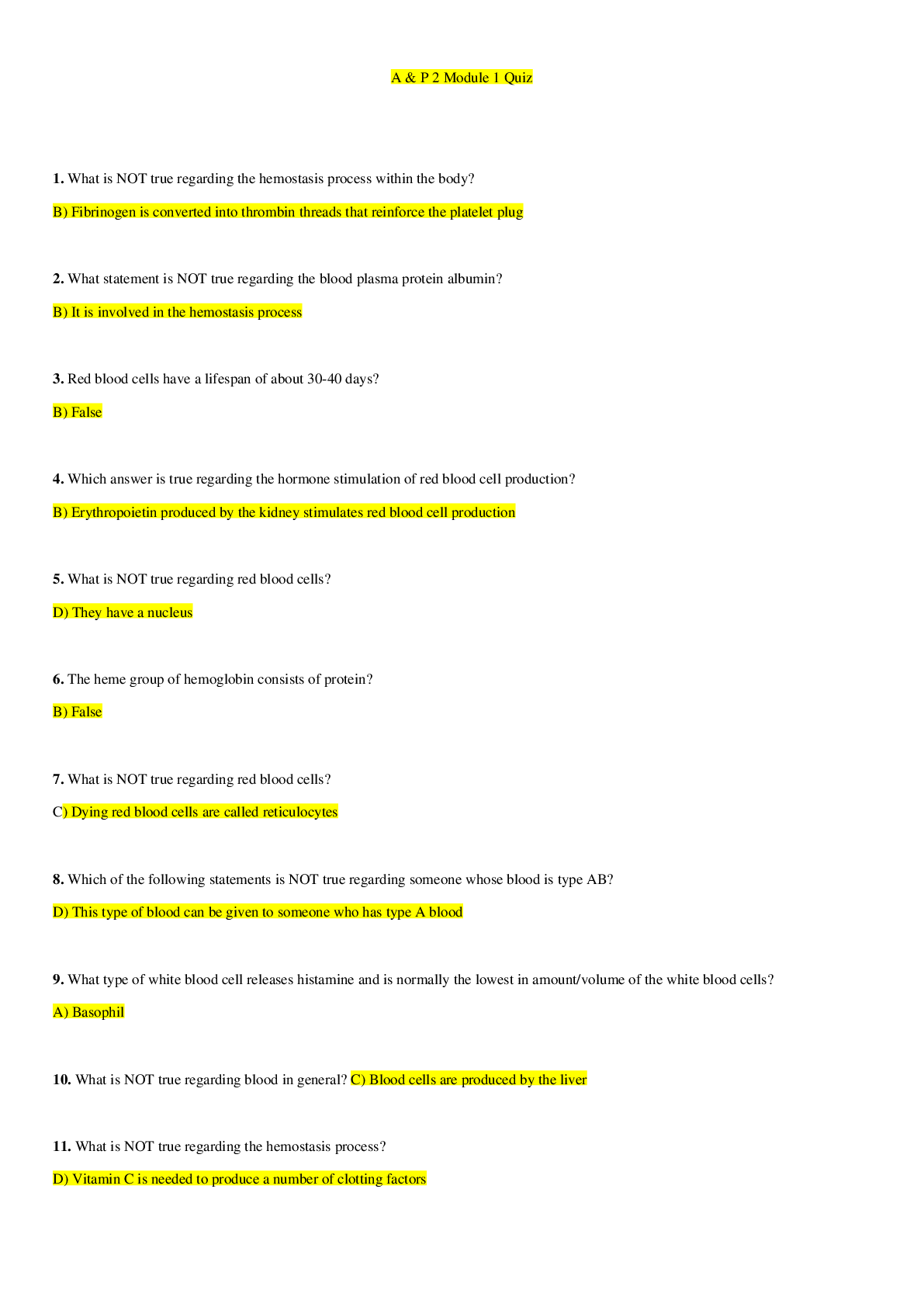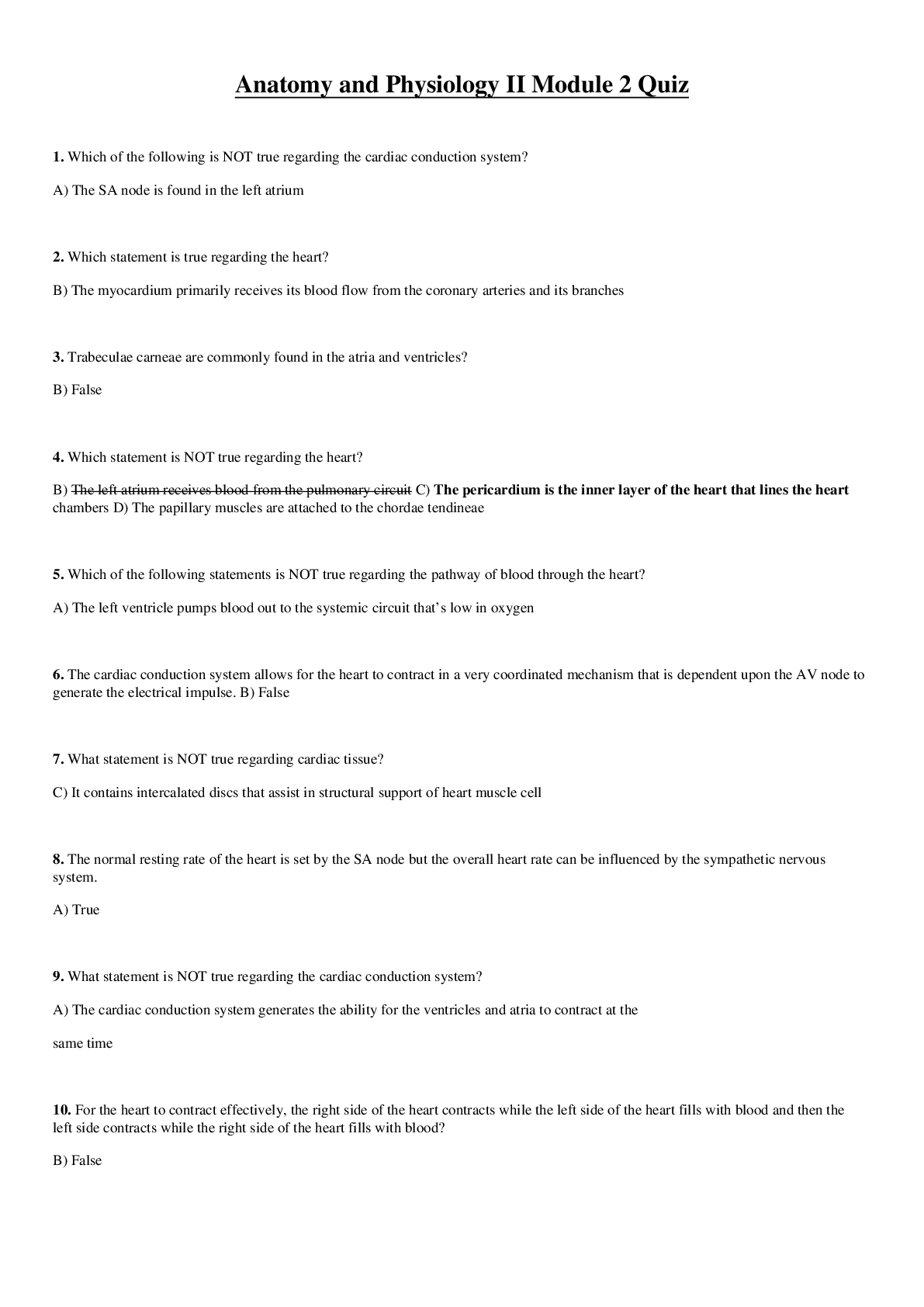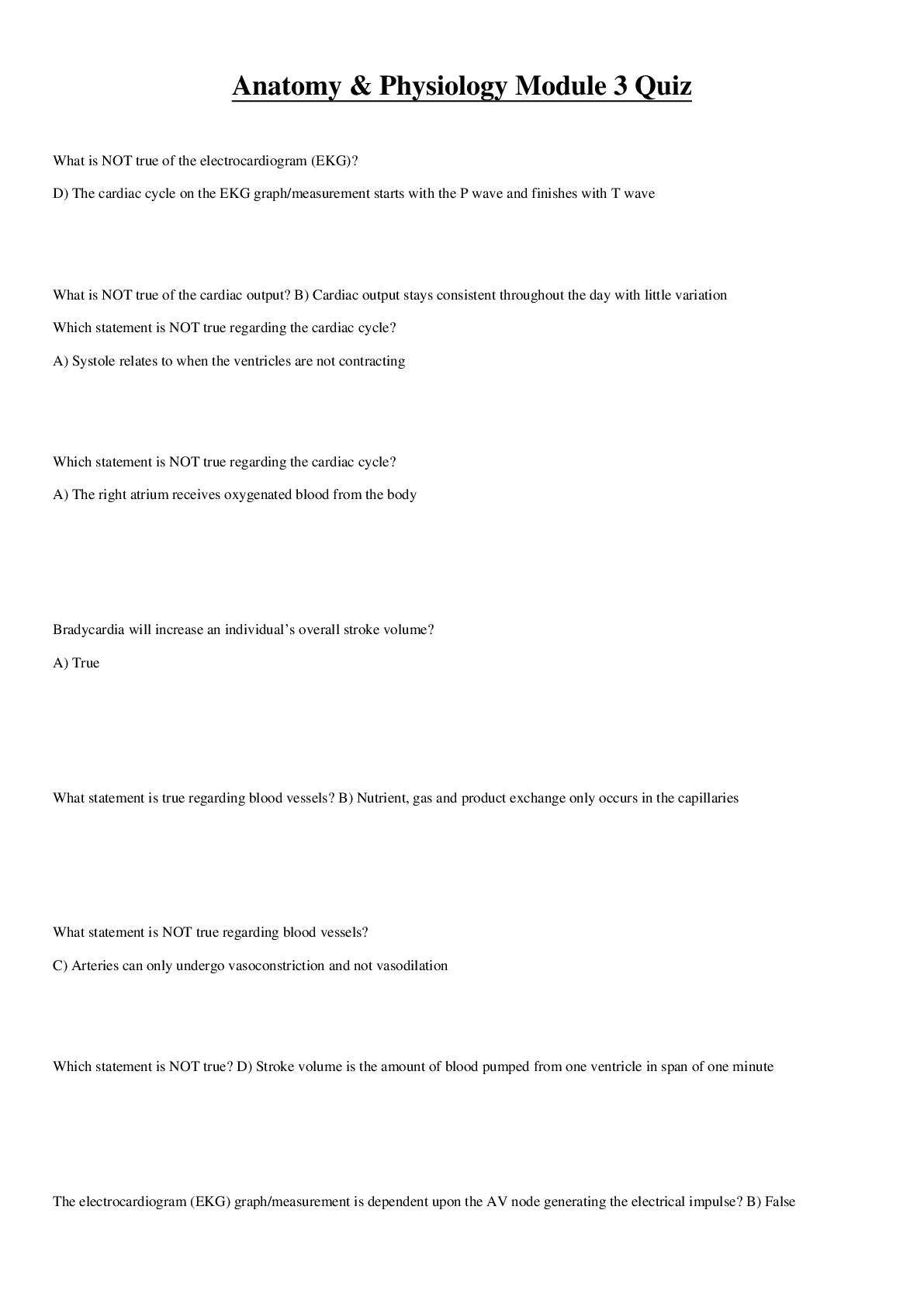*NURSING > STUDY GUIDE > BIOD 151 Anatomy and Physiology 1 Module 5 study guide - Portage Learning | Anatomy of the Muscular (All)
BIOD 151 Anatomy and Physiology 1 Module 5 study guide - Portage Learning | Anatomy of the Muscular System: Introduction & Muscles of the Head, Neck, and Trunk
Document Content and Description Below
Anatomy of the Muscular System: Introduction & Muscles of the Head, Neck, and Trunk Notice: To optimize your learning in this course, we advise that you complete the labs and modules as indicated i... n the BIOD 151 Lab Schedule. The muscular system and the skeletal system work together to provide movement for the human body. Muscle tissue is found in three distinct types in the body; skeletal, smooth, and cardiac. Skeletal muscles must have a blood and nervous supply to provide movement. Skeletal muscles are under conscious control, meaning that a person can consciously decide to use these muscles to complete an action. Communication within the body to coordinate movement starts in the brain with a message that is sent through the spinal cord and eventually attaches to a muscle. Peripheral nerves carry the signal from the central nervous system (brain and spinal cord) to a specific muscle destination to provide movement. Messages from the central nervous system to a muscle are called a motor actions. Nerves also carry information from the external environment to the central nervous system, called sensation or sensory input. (see Figure 5.1 and Figure 5.2) Spinal nerves combine to form complex networks of peripheral nerves throughout the body. Figure 5.1 Posterior view of the nervous system. The brain and spinal cord (central nervous system) connect to the peripheral nervous system. Examples of peripheral nerves are spinal nerves (cervical, thoracic, and lumbar), the upper trunk of the brachial plexus, and the radial nerve. Figure 5.2 Peripheral nerves carry the communication from the central nervous system (brain and spinal cord) to the muscle. Peripheral nerves also carry information from the environment to the central nervous system. Tendons are connective tissues that connect skeletal muscle to bone at each end (see Figure 5.3). Tendons are flexible, can bend at the joints, and help cushion against sudden movement. Ligaments are connective tissue that connects bone to bone, helping to stabilize joints where bones meet. Figure 5.3 Skeletal muscles attach to bones via tendons at points called the origin and insertion. The origin is the fixed point while the insertion is the place that is moved during a muscle contraction. All skeletal muscles have an origin, insertion, and action. The origin is the bony site of attachment which is stationary during the movement. The insertion of a muscle is the bony site of attachment that is moved by the muscle contraction. (see Figure 5.3) The origin and insertion can be reversed in different types of movement. For this module, the standard origin and insertion points are referenced from anatomical position. The action of the muscle is what effect is produced by the muscle’s contraction. For example, the triceps is the primary extensor of the forearm. The innervation is the peripheral nerve that supplies a muscle with the message from the brain. For example, the innervation of the biceps brachii is the musculocutaneous nerve. (see Figure 5.4) Figure 5.4 Anterior view of the musculocutaneous nerve (blue) innervates the biceps brachii muscle. Muscles are generally studied in groups. The following muscle list is an overview of some of the major muscles in the body. Study the location of the muscle in the body. In addition, if listed, study the origin, insertion, innervation and action of these muscles. Muscles of Facial Expression: (See Figure 5.5) The muscles in this grouping help to facilitate all the actions within the face. All the varied facial expressions are enabled by these muscles. CN is an abbreviation for cranial nerve. There are twelve pairs of cranial nerves that originate on the ventral surface of the brain, controlling muscles and functions of several organs and glands. Orbicularis oculi Action: eye closure Innervation: Facial nerve (CN VII) Orbicularis oris Action: mouth clos [Show More]
Last updated: 1 year ago
Preview 1 out of 133 pages
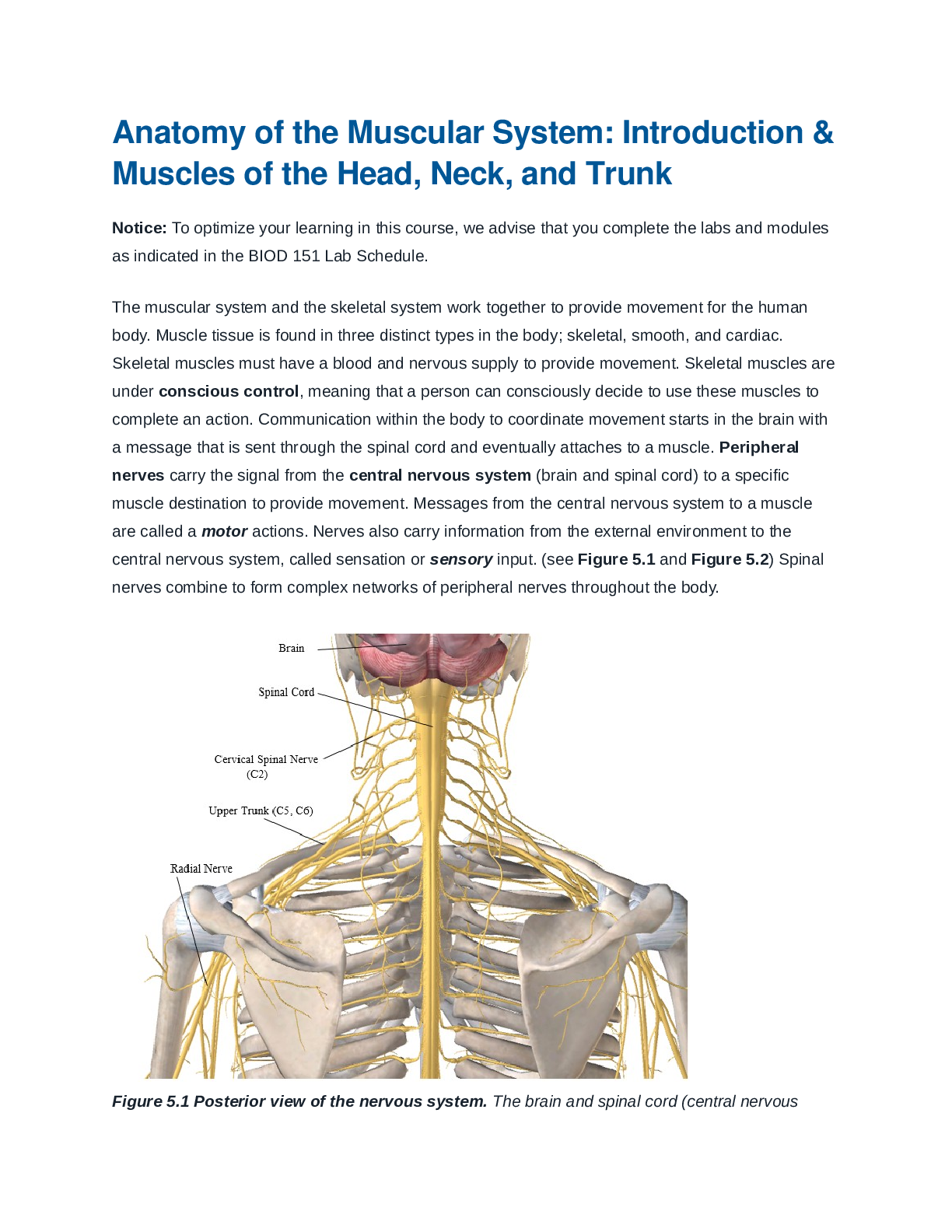
Reviews( 0 )
Document information
Connected school, study & course
About the document
Uploaded On
Oct 01, 2021
Number of pages
133
Written in
Additional information
This document has been written for:
Uploaded
Oct 01, 2021
Downloads
0
Views
213





